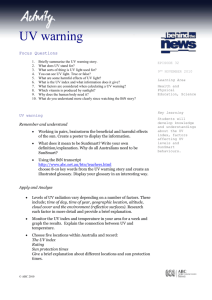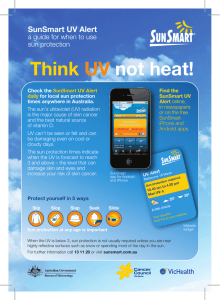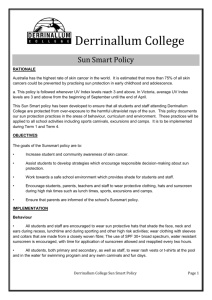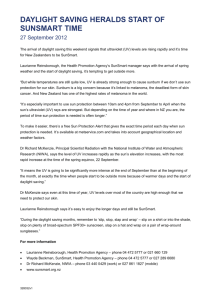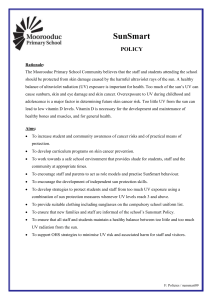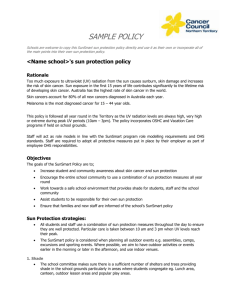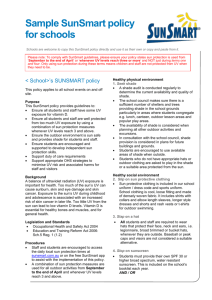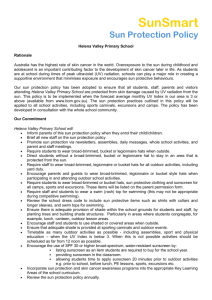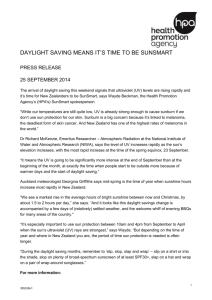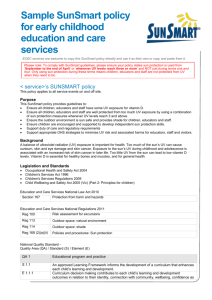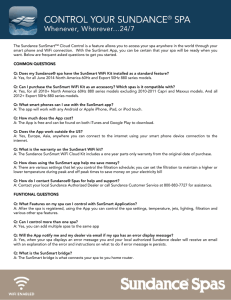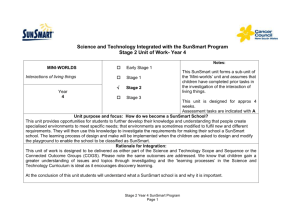WORD - ABC
advertisement
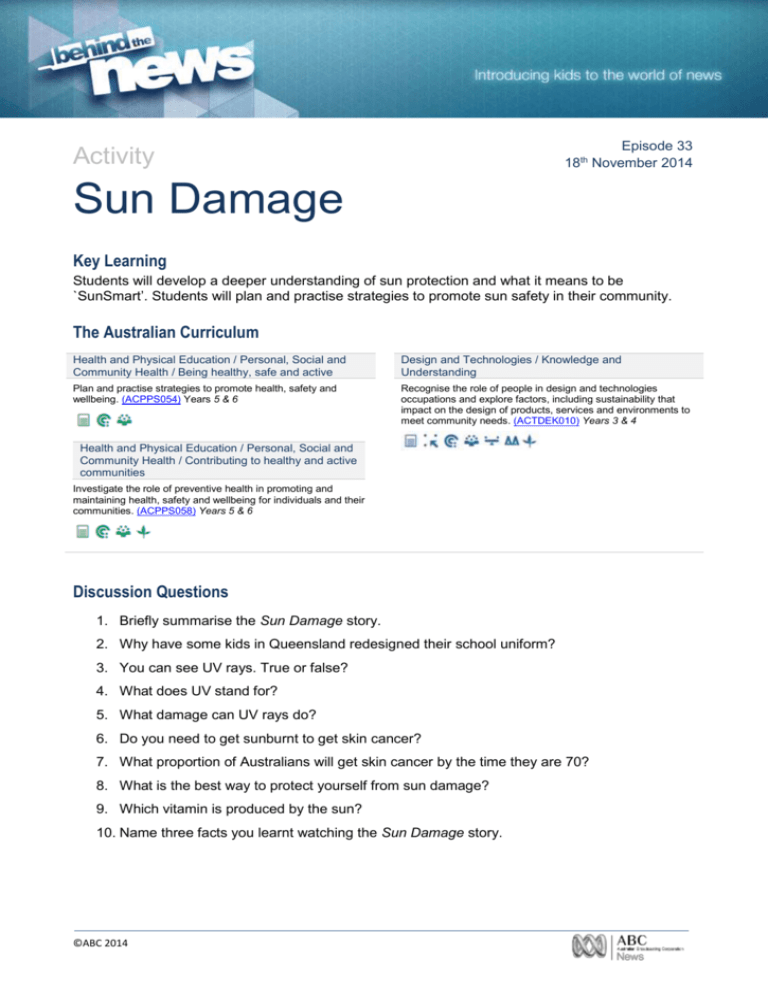
Episode 33 18 November 2014 Activity th Sun Damage Key Learning Students will develop a deeper understanding of sun protection and what it means to be `SunSmart’. Students will plan and practise strategies to promote sun safety in their community. The Australian Curriculum Health and Physical Education / Personal, Social and Community Health / Being healthy, safe and active Design and Technologies / Knowledge and Understanding Plan and practise strategies to promote health, safety and wellbeing. (ACPPS054) Years 5 & 6 Recognise the role of people in design and technologies occupations and explore factors, including sustainability that impact on the design of products, services and environments to meet community needs. (ACTDEK010) Years 3 & 4 Health and Physical Education / Personal, Social and Community Health / Contributing to healthy and active communities Investigate the role of preventive health in promoting and maintaining health, safety and wellbeing for individuals and their communities. (ACPPS058) Years 5 & 6 Discussion Questions 1. Briefly summarise the Sun Damage story. 2. Why have some kids in Queensland redesigned their school uniform? 3. You can see UV rays. True or false? 4. What does UV stand for? 5. What damage can UV rays do? 6. Do you need to get sunburnt to get skin cancer? 7. What proportion of Australians will get skin cancer by the time they are 70? 8. What is the best way to protect yourself from sun damage? 9. Which vitamin is produced by the sun? 10. Name three facts you learnt watching the Sun Damage story. ©ABC 2014 Activities Blooms Taxonomy Negotiate with students how many activities they complete from each section. Remember and understand How do you decide whether or not sun protection is needed? Ask other students in your class how they decide. What are some common myths about sun protection? `Bust’ each myth with an explanation. Here are some examples: o You can’t get burnt on a cloudy day o You can’t get burnt through glass o Kids can’t get skin cancer o Skin cancer is not a serious form of cancer because it can be cut out o One application of sunscreen in the morning is enough Respond to the following statement: `It is not recommended that we rely on sunscreen alone for protection from the sun.’ Apply and analyse Why is the sun damaging to humans? What are UVA and UVB rays, and how do they affect humans? Create a labelled diagram to explain your answer. What are the warning signs of skin cancer? What should people do to check for these signs? Interview a dermatologist or oncologist as part of your research. Why is Vitamin D important to the human body? Find out how you can get enough sun for vitamin D without increasing the risk of skin cancer. Investigate how clothing, the time of day and year, geographical location and skin type can all affect the amount of vitamin D your body makes. Evaluate and create Survey students at your school about their practices regarding the sun and protecting themselves from the sun’s rays. Include questions about wearing protective clothing, applying sunscreen and seeking shade. What do the survey results indicate? What is your school policy on sun safety? o Can you think of any other rules or tips that could be added to your school sun smart policy? For example, your school could give a daily UV alert and sun protection reminders. o Is your school’s sun smart policy written in a kid friendly way? If not, write and/or illustrate a kid friendly version for your school including any new rules that you think need to be added. Do you think your school is sun safe? Why or why not? o Think of ways that you could improve your school yard and school uniform to make them more sun safe. List your suggested improvements. ©ABC 2014 o o Design and illustrate your new and improved school uniform and school yard. Write a short paragraph on why you believe these improvements are necessary. Set up a meeting with your school council to discuss your proposed improvements. Create a game, poster or public service announcement that increases sun safety awareness in your school during Skin Cancer Action Week. Include the five ways that kids can protect themselves from the sun, including ‘slip, slop, slap, seek and slide’. Consider including your own slogan. Further activity How sun smart are you? How much do you know about sun safety? To find out you can play this sun smart game. http://lrrpublic.cli.det.nsw.edu.au/lrrSecure/Sites/Web/sunsmart/game/game_01.htm Related Research Links Behind the News – Sun Safety http://www.abc.net.au/btn/story/s3340142.htm Behind the News – UV Warning http://www.abc.net.au/btn/story/s3057520.htm Cancer Council – Skin Cancer Action Week http://www.cancer.org.au/preventing-cancer/sun-protection/campaigns-and-events/national-skincancer-action-week.html Cancer Council – Sun Safety http://www.cancer.org.au/preventing-cancer/sun-protection/ Cancer SA – SunSmart infographic: How much sun is enough? http://www.cancersa.org.au/assets/images/SunSmart%20infographic_20130503-01.png SunSmart – UV and sun protection https://www.sunsmart.com.au/uv-sun-protection ©ABC 2014
